To see Global Grade 3's original post and the comments relating to this post, click below...
Global Grade 3
Hello Global Grade 3,
Looking through some old 35mm slides, I found some interesting ones I had taken years ago. I decided to start scanning them. You are the first with whom I have shared these photos since they were taken.
The volcanoes in New Zealand tend to normally be more ash volcanoes than lava volcanoes. I have seen magma thrown out in photos but I am not aware of any recent lava flows.
Mt. Tarawera is a popular tourist attraction. You can hike up its slopes or go on a four-wheel drive tour. I have taken the easy way up twice now. Once on the rim, you have to hike and climb (not hard) along a trail to the far side of the main crater before going down a steep scree slope to the bottom of the crater. I made the walk with a video camera and tripod plus a 35mm camera in hand. You can see two craters along the walk. The main tourist accessible crater you can see in this extended comment…
https://rossmannellcomments.edublogs.org/2012/05/23/samples-scree-obsidian-samples/
The other crater is to the south of the trail and is shown below.
Schools and students have permission to use this graphic for non-commercial, educational purposes.
Tourists aren’t allowed in that one. You need to be experienced rock climbers due to the dangerous slopes. Below is another slide I scanned with the first. It shows sulphur (sulfur) crystals and was taken near an active vent. Sulphur crystals break down when exposed to water but near a vent, they are kept warm and dry and keep their crystal shine. I have a sample of sulphur crystals in my collection. It has spent 20 years in a clear perspex water-tight container so it keeps its shine.
Schools and students have permission to use this graphic for non-commercial, educational purposes.
In 1996, I was able to travel to Hawaii when my brother won a trip. We also flew down to The Big Island (the real island of Hawaii). I took a chance to take a helicopter ride over the very active Kilaeua volcano.
Schools and students have permission to use this graphic for non-commercial, educational purposes.
In the photo below, we can see gases escaping from a fumarole on the side of Kilaeua. We were able to fly nearby and peer down to see lava flowing below.
Schools and students have permission to use this graphic for non-commercial, educational purposes.
At this point the lava was flowing below ground through lava tubes. These underground lava tunnels are formed when lava cools at the surface but stays liquid inside the tube. When the lava flow stops, long tubes are left. Below is a photo of an old lava tube now with access for tourists.
Schools and students have permission to use this graphic for non-commercial, educational purposes.
When the lava flows out of the tube and into the sea, the seawater boils and steam rises. In the photo below, you can see steam rising as lava hits the water. Look carefully and you can see the yellow glow of the lava as it emerges from tubes at the water's edge near the centre top of the photo.
Have you ever wondered what happens to trees when lava flows above the ground and around trees? In the aerial photo below, you can see finger-like structures jutting above the ground. Lava had surrounded trees. The trees had burned away and hollow tubes were left to mark where trees had been.
Schools and students have permission to use this graphic for non-commercial, educational purposes.
There are walks on Kilaeua. The photo below was taken on a walk. It shows a large caldera. Calderas are formed by the collapse of land following a volcanic eruption. Can you imagine it once being filled with hot glowing, bubbling magma?
Schools and students have permission to use this graphic for non-commercial, educational purposes.
Now for some new photos I took today to show other volcano associated rocks from my collection. As lava cools, flows might crack or gases may be caught inside the cooled lava both leaving spaces. In time water carrying dissolved minerals can seep into the spaces, the water leaving the minerals behind as it evaporated. Here are some photos of what can result. These are photos of thunder eggs and geodes. While not all geodes (a geode is a rock with a space in it) are formed in association with volcanoes, these were.
The first photos show agate and quartz crystals, both forms of silicon dioxide (SiO2)...
Schools and students have permission to use this graphic for non-commercial, educational purposes.
Schools and students have permission to use this graphic for non-commercial, educational purposes.
Schools and students have permission to use this graphic for non-commercial, educational purposes.
Schools and students have permission to use this graphic for non-commercial, educational purposes.
The next one is a favourite. It is only about 10cm (4") across and shows amethyst crystals inside. Amethyst is a form of quartz.
Schools and students have permission to use this graphic for non-commercial, educational purposes.
Now one last photo I had taken along a highway about eleven kilometres (about 7 miles) from my home. It is a rock cutting.
Schools and students have permission to use this graphic for non-commercial, educational purposes.
Look at the coloured layers of rock. My area was, millions of years ago, a place with a number of volcanoes. Now imagine a massive volcanic eruption from beneath shattering these layers of rocks into small pieces (scree also known as talus). You can see why scree can have many colours. Scree is not only found in and around volcanoes like Mt. Tarawera, it can be found anywhere where small fragments of rock break away from larger rocks such as cliffs and mountains.
Isn’t geology interesting? I hope you enjoyed looking at this collection of photos. 🙂
@RossMannell
Teacher (retired), N.S.W., Australia








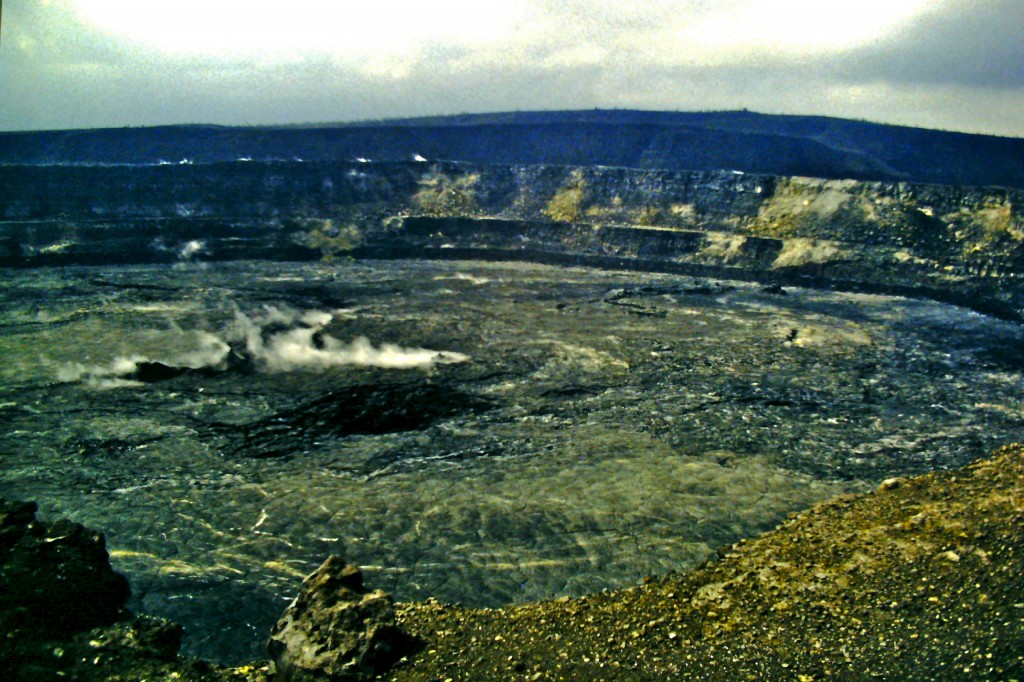
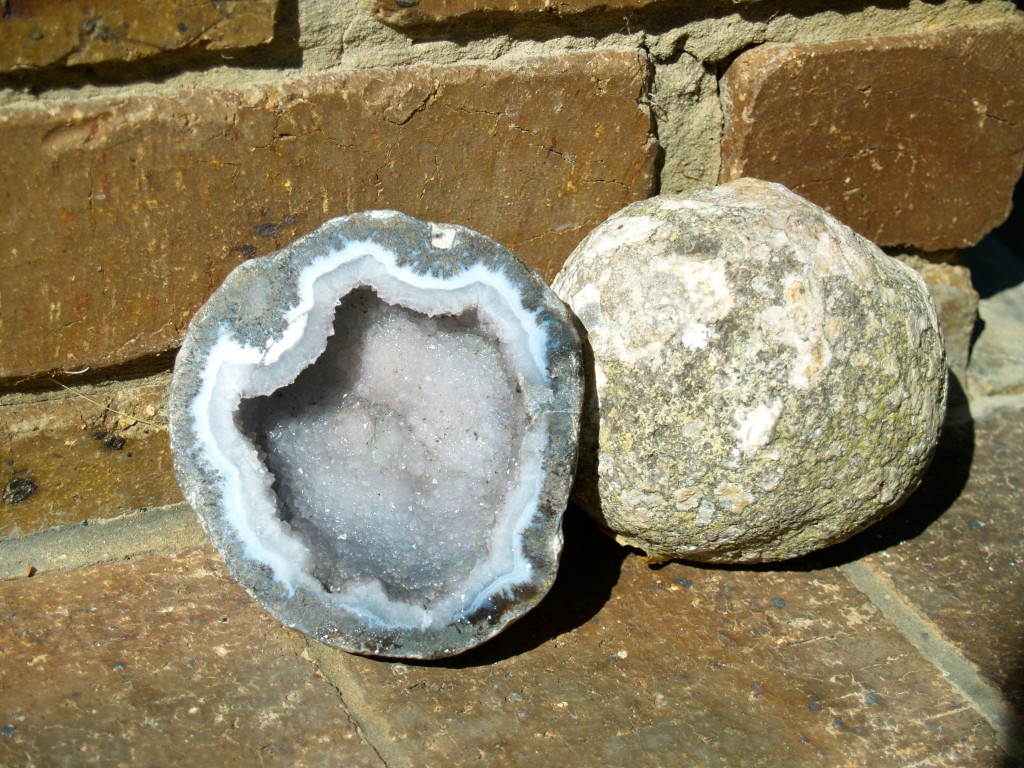

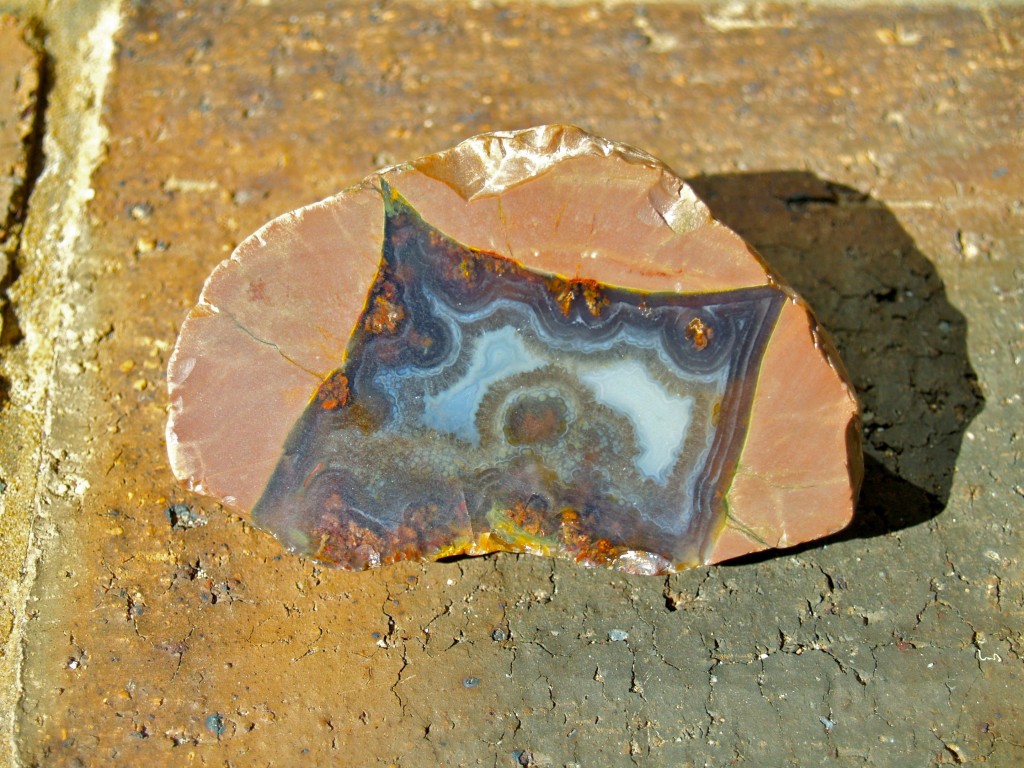
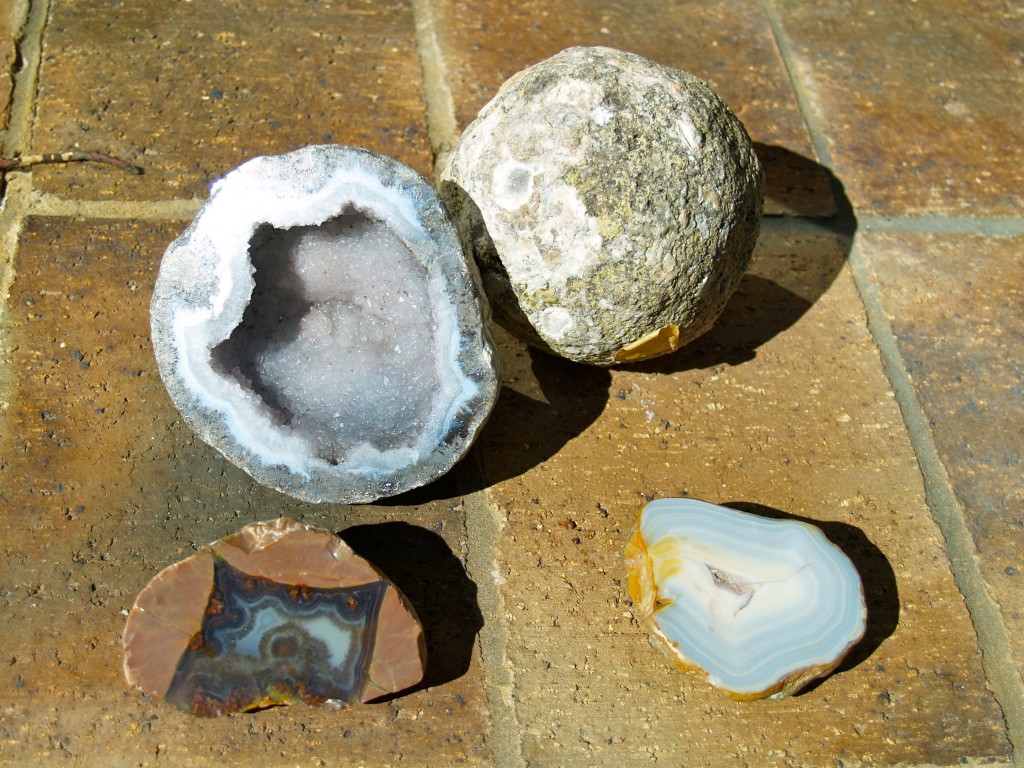
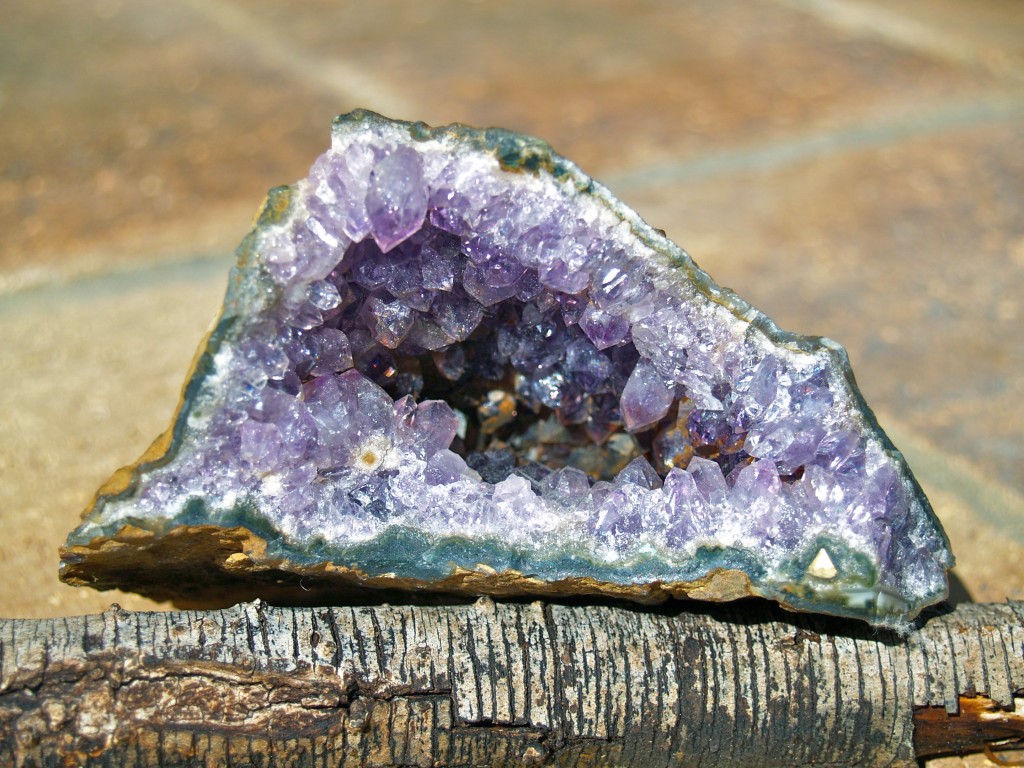

The Battalion Hawk Bloggers
Hi Ross!
http://rossmannellcomments.edublogs.org/2012/10/14/more-on-volcanoes-for-global-grade-3/
http://globalgrade3.cbegloballearning.ca/
Thank you SO much for another incredible extended comment! We feel really badly that it is taking us so long to reply … but … we are trying to catch up on comments in the order that they have come in! We LOVE that you always put so much time into your comments for us. We always learn SO much from you!
We know that seasons are different around the world … but it is STILL hard for us to believe that children in Australia will be starting their summer vacations in December!
We think it is SO cool that you are sharing your 35mm pictures with us. We feel pretty blessed to be the first to see them! We can’t imagine how you are going to find the time to scan ALL your photos … especially with all the DVD work you do!
Mt. Tarawera looks TERRIFYINGLY steep. Most of us would not like to be anywhere near it! We can see how you would have to be an experienced rock climber to go into the crater! We LOVE the sulphur crystals, but we wonder what the pink rock around it is. It’s so beautiful with the yellow and the pink.
We had NO idea that the tubes could be big enough to walk into! One of our bloggers was telling us about the tubes from Mt. St. Helens. He said that there were sculptures, naturally formed by lava, inside these tubes. One of them is called meatball and another is called train tracks. We have to look that up! This same student saw tubes left from trees that were burned because of the volcano too!
We love all the photos that you shared with us. They are all amazing! Thank you for helping us learn more about volcanoes and rocks and minerals! We’ve learned stuff from you that we would NEVER have discovered on our own! You have helped to stretch our learning AGAIN!
The Battalion Hawk Bloggers 🙂
Pingback:
The POWER of a FLATTENED Classroom | Global Grade 3
rossmannell
Post authorHello Global Grade 3,
I understand it can sometimes take time to answer comments. It took me a week to reply to this comment because my latest filming project is to produce two DVDs and two CDs for a choir and dancing school. It’s taken many hours so far with only one CD ready but almost all of the artwork complete.
In time I hope to scan many hundreds of my old slides and negatives. It can be surprising what we can find stashed away somewhere, e.g. I found a slide of myself at age 5. It’s hard to believe it’s over a half century old.
Mt. Tarawera does have some steep and dangerous slopes but tourists are only permitted in a less dangerous crater. You need only be reasonably fit to visit but the view is spectacular. Mt. Tarawera is the highest peak in its area.
The sulphur crystals show their correct colour but the surrounding rock isn’t. When scanning the old slide, the surrounding rocks took on a reddish tinge. They were actually grey.
Lava tubes are also found in Australia. The last eruptions in Australia were thought to be around 5000 years ago in the state of South Australia. I have slides of the crater somewhere in my collection yet to be scanned. Some of the eruptions had runny lava like in Hawaii and so left lava tubes such as those in Undara in northern Queensland.
My own area was volcanically active around 30 to 50 million years back. This was well after the age of dinosaurs and well before people were in Australia. Considering how many volcanic plugs I have seen from Queensland, through New South Wales, into Victoria and across Bass Strait in Tasmania, there must have been some very active times in the past.
Links…
Undara Lava Tubes, Queensland
http://www.thalabeach.com.au/undara-lava-tubes/
Mt. Tarawera
http://en.wikipedia.org/wiki/Mount_Tarawera
Volcanic Plugs
http://en.wikipedia.org/wiki/Volcanic_plug
@RossMannell